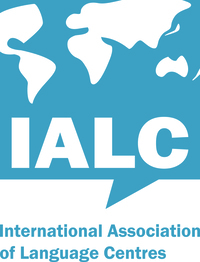Coursebooks are essential tools for educators, offering a wide range of options suitable for various levels and subjects. With countless choices available, teachers can easily find materials tailored to their students’ needs. From beginner to advanced levels, and across different subjects, coursebooks provide a solid foundation for lesson planning and curriculum development. Their versatility makes them indispensable resources in the classroom, ensuring that teachers can effectively deliver content and meet learning objectives.


Cultivating Effective Learning Environments with Coursebooks: Benefits and Advantages
Utilising coursebooks in the classroom offers numerous advantages that contribute to an enriching and effective learning environment. Let’s look at the perks!
- Graded Content: Coursebooks are meticulously structured to align with students’ proficiency levels, providing a graded progression of difficulty. This ensures that learners are presented with content that is appropriate for their current stage of language development, facilitating gradual skill acquisition and comprehension.
- Diverse Content: One of the key strengths of coursebooks lies in their ability to cover a wide range of topics, language skills, and grammatical points. From vocabulary building exercises to reading comprehension passages and grammar drills, they offer a comprehensive suite of materials that cater to various learning objectives and preferences.
- Student Expectations: Books have become a staple resource in language learning environments, with students often expecting their use as part of the curriculum. This familiarity can create a sense of comfort and consistency for learners, helping to establish routine and structure within the classroom setting.
- Facilitated Planning: For teachers, coursebooks serve as invaluable aids in lesson planning and curriculum design. The structured nature of these materials provides educators with a framework upon which to build their instructional strategies, offering ready-made content that can be easily adapted to suit specific teaching goals and classroom dynamics. By leveraging the inherent organisation and coherence, teachers can streamline their planning process and focus their efforts on delivering engaging and effective lessons.
- By harnessing the benefits, educators can enhance the learning experience for their students, promote skill development across various language domains, and streamline their instructional practices for maximum efficiency and effectiveness.
Adapting Coursebook Content: Meeting Diverse Student Needs for Enhanced Learning
While coursebooks offer a solid foundation for learning, it’s crucial to remember they cater to a “standard” student. This means educators must adapt content to meet the diverse needs of their students effectively. By tailoring material to suit individual preferences and learning styles, teachers can ensure greater engagement and comprehension among learners. This flexibility enables educators to create a more personalised and inclusive learning experience, maximising the benefits of usage in the classroom.
Below are strategies for adjusting your material to better suit your teaching context:
- Begin by determining the purpose of the material. Ask yourself if it’s designed for skill development or introducing new language concepts. Once you’ve clarified this, planning your lessons becomes more straightforward.
- Assess whether the text’s length aligns with your lesson objectives. Consider the time available and the planned activities, deciding whether to shorten or supplement the material accordingly.
- Recognise that not every activity may be necessary or relevant to your students. Instead, focus on your objectives and preferred teaching framework, selecting activities that best match your instructional stages.
- Evaluate the topics’ relevance and suitability for your specific student demographic. Tailor the material to align with their interests, backgrounds, and learning goals.
- Verify the material’s currency. Ensure that the content remains up-to-date and resonates with contemporary language use and cultural contexts.
So, we can see that coursebooks offer valuable resources for classroom instruction, adaptable to various teaching approaches and student needs but teachers need to embrace the flexibility to modify and customise materials, ensuring that your lessons effectively cater to your learners.
Explore further insights and methodologies in our CELTA courses, where real-world teaching experiences are complemented by expert guidance from qualified tutors!





